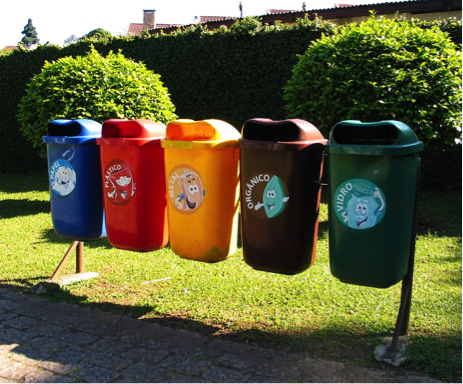Lithium-ion (Li-ion) batteries are a type of rechargeable battery that has become incredibly popular and widely used in various applications due to their high energy density, reliability, and relatively low self-discharge rate. These batteries are widely used in renewable energy storage systems, electric cars, and consumer gadgets.
In this case, first, we need to know about waste management and how to Sustainably recycle these things.
Three “R”s of waste management
An efficient method of achieving waste minimization is to emphasize the most important of the three Rs: reduce, reuse, and recycle. The most environmentally friendly methods are the three R’s.
Reduce This is the most important and first “R.” It involves reducing the amount of waste and consumption in the first place.
Reuse the second “R.” is Reusing items. It considers reusing objects rather than throwing them away after only one usage.
Recycle Recycling is the third “R.” It consists of gathering, processing, and creating new goods from substances that have already been used.
The three Rs offer an approach through which people and communities may lessen their impact on the environment and achieve sustainability.
What things we can recycle?
We can recycle paper, wood, glass, and water.
How is this possible for water recycling?
Water recycling, or water reuse, is a crucial practice for conserving and managing water resources by treating and reusing wastewater for various purposes.
Sustainable water recycling is crucial for responsible water management, particularly in regions facing water scarcity and increasing freshwater demands, reducing strain on traditional sources and promoting environmental conservation.
In the same way, we can do sustainable recycling of lithium-ion batteries.
Is it sustainable to recycle lithium batteries?
As lithium-ion batteries are widely used in a variety of electronic devices and electric vehicles, recycling them can help recover valuable materials like lithium, cobalt, and nickel, reducing the need for mining and minimizing environmental impact. However, the sustainability of lithium battery recycling depends on effective processes, energy use, and the responsible handling of hazardous materials. Recycling lithium batteries can help reduce waste and pollution, and when done correctly, it can help reduce the environmental footprint of battery production.
Because lithium-ion batteries don’t include elements like cadmium, lead, or mercury, they are also thought to have little environmental impact. Since elements like lead, mercury, and cadmium have always been present in nature, they don’t really affect the ecology as a whole.
Critical materials in lithium-ion batteries include:
Lithium is the primary component, which is essential for energy storage.
Cobalt is used in some cathodes, but its scarcity and ethical concerns have led to efforts to reduce or eliminate its use.
Nickel Commonly used in cathodes, with various compositions
Graphite is an anode material that nevertheless, efforts are in progress to switch to silicon in order to achieve a better energy density.
Copper and aluminium are utilized in the cathode and anode current collectors.
Aims are being made to enhance the sustainability of lithium-ion batteries and minimize dependency on essential resources.
Reducing the environmental effects and recovering valuable materials from lithium-ion batteries requires sustainable recycling. The following steps are usually involved in the sustainable recycling process:
Gathering and sorting: Out-of-date or used batteries are gathered from various places, including manufacturers, recycling facilities for electronic waste, and some projects specifically designed to gather batteries. Batteries are sorted by their type and size to ensure their efficient processing.
Processing Methods: Precipitation, solvent extraction, filtering, and other techniques are used to separate and purify different metals.
Refining: For additional refinement the recovered metals are transported to refineries for a last level of purification.
Making New Batteries: By using refined materials to make new batteries, less raw material mining and processing is required.
Recycling lithium-ion batteries sustainably minimizes waste creation as well as helps to save resources and lessens the environmental effect of battery manufacture and disposal. It also supports the circular economy, which extends the life of resources via recycling and reuse.
Sustainable recycling of critical materials in lithium-ion batteries is a crucial aspect of environmental responsibility and resource conservation.
- Preservation of Resources: Critical elements including nickel, cobalt, and lithium may be recovered with the use of lithium-ion battery recycling. As a result, there is less need for new mining, protecting these priceless resources.
- Decrease in Ecological Harm: These minerals can have major negative effects on the environment if extracted. Recycling minimizes the need for this kind of extraction, which reduces pollution and disturbance of the ecosystem.
- Efficiency of Energy: The goal of sustainable recycling methods is energy efficiency. For total sustainability, recycling energy usage must be kept to a minimum.
- Hazardous Material Handling: To avoid contaminating the environment, hazardous materials, such as the electrolytes and other chemicals in batteries, must be handled and disposed of properly.
- The Circular: Economy Recycled materials go back into the battery manufacturing cycle as part of a sustainable strategy, which further cuts resource consumption by creating a circular economy.
- Innovation and Research: To create more environmentally friendly recycling technologies and processes, ongoing research and innovation are crucial.
In general, a more conscientious approach to resource management and a reduction in the environmental effect of battery production is facilitated by the sustainable recycling of essential components found in lithium-ion batteries.
- About the Author
- Latest Posts
A passionate advocate for all natural and sustainable ideas. With a background in sustainable economics science and a deep love for nature, Sojy has dedicated his career to promoting eco-friendly practices and encouraging others to live a more sustainable lifestyle. He is an avid hiker, gardener, and cook, and loves experimenting with natural ingredients in his recipes and lifestyle routines. Sojy believes that small changes can make a big impact and is constantly seeking out new ways to reduce his carbon footprint and inspire others to do the same




